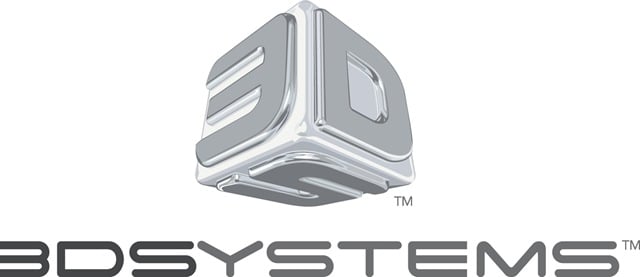
Several recent happenings suggest 3D Systems might be considering changing their business focus.
As you may have heard, 3D Systems (and other major incumbent 3D printing players) have had a very challenging time financially in the past two years. Quarterly financial reports from both 3D Systems and Stratasys show only modest gains this year, and both exhibit financial performance that could stand to be improved. I believe these troubles are an effect caused by the entry of HP and others into the high-end market, causing buying delays, and increased competition at the low end of the market by inexpensive 3D printers.
3D Systems, like its competitors, has for many years positioned itself as a maker of 3D printing equipment, with associated services such as printing, software and materials supply, as a result of their acquisition of Simbionix.
But in their most recent financial report, one of the bright spots was their healthcare business. The company reported sales of healthcare solutions, services and supplies had “strong demand”, although they did not specify the exact figures.
Then, I see an email bulletin from the company touting a series of their healthcare products, entitled, “Changing the Future of Precision Medicine”. In the mailing were a number of offers:
-
Trade-in your ultrasound simulator for an U/S Mentor. Contact us to hear more about this new offer and switch to the most advanced ultrasound hands-on training tool available.
-
Surgeons benefit from the improved visualization and 3D understanding provided by VSP
-
Trauma.
-
Now Available: the CHEST Standardized Curriculum on the BRONCH Mentor. Clinical decision making with hands-on for training, assessment and future certificate of completion.
-
The ANGIO Mentor Aortic Valve Replacement module now offers a unique practice of transcatheter aortic valve implantation into a surgical valve.
-
Train in the key components of the robotic assisted right upper lobe lobectomy procedure.
-
The PELVIC Mentor advanced women’s health simulator allows OB/GYNs, family practice doctors, medical students, nurse practitioners, certified nurse midwives, physician assistants, and others to obtain detailed knowledge of pelvic anatomy and to acquire the comprehensive skills required to perform pelvic exams.
And:
- Direct Metal Printing markets include industrial, dental and medical (common applications include patient-specific implants as well as volume production of standard implants).
None of those items at the top are 3D printing, although some may have a 3D software or visualization component. Only the bottom item is a traditional 3D Systems-style product.
Now certainly these are products from their Healthcare division, but it’s interesting to note that they largely have little to do with 3D printing.
Companies such as 3D Systems typically launch this style of venture in order to generate indirect demand for their prime products: 3D printers and materials. But it seems that may not be the case here, or at least is limited in that respect. It is beginning to appear as a standalone business venture. And apparently profitable, too.
I’m wondering if 3D Systems is contemplating a stronger move into this space in the future? What happens if the healthcare venture continues to succeed and their main pure 3D printing business is swamped by competition?
Could they pursue this apparently successful strategy in other industry verticals, like aerospace, automotive and energy?
It may be that their previous strategy of acquiring 3D-related companies, both software and hardware may pay off in an unexpected manner.
Via 3D Systems

